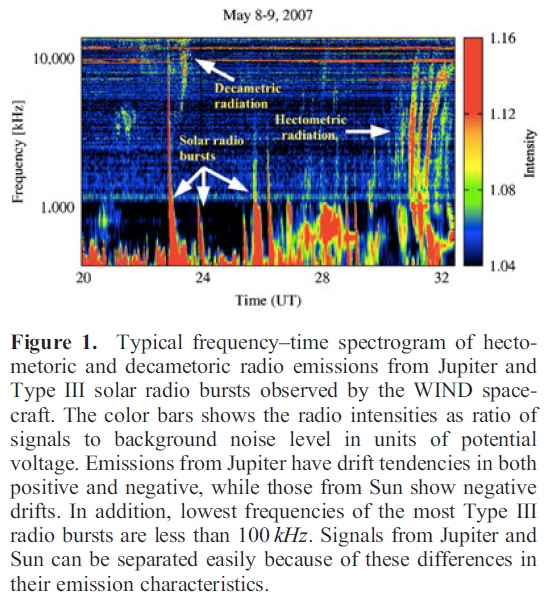I refer to Yoneda and 7 collaborators: "Io's volcanic role on Jupiter's magnetosphere"
http://adsabs.harvard.edu/abs/2013EGUGA..15.6764Y
Abstract: "Io is the most volcanically active body in the solar system. Its volcanic atmosphere is the main source of Jupiter's inner magnetospheric plasma. Therefore, it can be expected that the magnetospheric environment is controlled by Io's volcanic activity. As a result of Io's atmospheric escape, D-line emission from the Jupiter's extended sodium nebula is observed from the ground. On the other hand, Io's volcanic activity itself can be observed from the ground by detecting its thermal emission in a wavelength range of near- and mid-infared. We have been making observations of Io's volcanic activity, Io's atmospheric escape, and Jupiter's magnetospheric phenomena from the ground. By comparing among data from our observations and spacecraft, we found time variations in those data. For example, we compared data of hectometric radio emission from Jupiter's magnetosphere (so-called HOM) obtained by the WIND spacecraft to the D-line brightness of the sodium nebula. The HOM emission seems to have been weakened after an enhancement in the sodium nebula which was probably caused by the volcanic change on Io. HOM is believed to be related to Jupiter's aurora activity. These observation results indicate that Io's volcanic activity is controlling Jupiter's aurora. In this presentation, our observation results and relations among these phenomena, and comparisons with the past model results will be shown."






